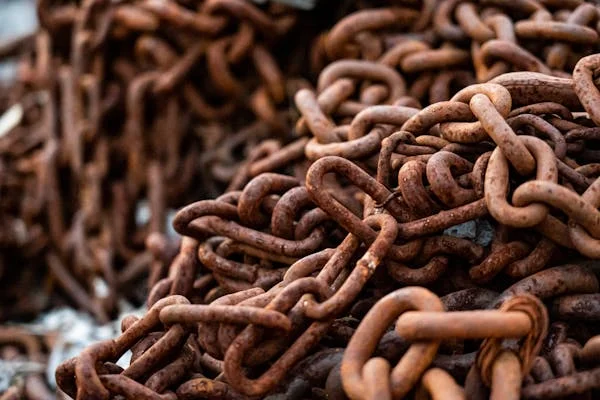Introduction
In industrial and engineering applications, corrosion is a major challenge that can lead to severe damage, reducing the efficiency and lifespan of metal components. One of the most insidious forms of corrosion is pitting corrosion, which occurs in localized areas and can be difficult to detect.
Among the advanced inspection tools available today, the VT1000 visual testing system is widely used for identifying pitting corrosion in metal structures. Understanding VT1000 pitting is crucial for industries that rely on metals exposed to harsh environments, such as aerospace, oil and gas, and marine engineering.
This article explores VT1000 pitting, its causes, detection methods, and prevention strategies to help industries mitigate risks and ensure the longevity of their equipment.
What is VT1000 Pitting?
VT1000 pitting refers to localized corrosion detected using the VT1000 visual inspection system. This system uses high-resolution imaging to identify pitting damage on metal surfaces, helping engineers assess corrosion-related risks and take preventive actions.
Key Characteristics of VT1000 Pitting
- Localized Corrosion: Appears as small, deep pits on the metal surface.
- Difficult to Detect: Often occurs in areas not easily visible without specialized equipment.
- Progressive in Nature: If left unchecked, pits can grow deeper and cause structural failure.
- Common in Harsh Environments: Found in metals exposed to moisture, chemicals, and high temperatures.
Causes of VT1000 Pitting
Pitting corrosion is influenced by several environmental and material factors. Understanding these causes can help industries adopt preventive measures to minimize the risk of pitting.
1. Exposure to Chlorides
Chloride ions (Cl⁻) are one of the primary culprits of pitting corrosion. They break down the protective oxide layer on metal surfaces, leading to localized corrosion. Common sources include:
- Seawater: Marine environments expose metals to high chloride concentrations.
- Industrial Chemicals: Used in processing plants and cooling systems.
- De-icing Salts: Applied on roads and bridges in winter conditions.
2. High Humidity and Moisture
Moisture combined with oxygen and pollutants can create a corrosive environment, accelerating pitting. This is especially problematic in:
- Coastal regions with high salt content in the air.
- Industries with steam processes, such as power plants and chemical factories.
3. Acidic and Alkaline Environments
Certain acids and bases weaken the passive layer of metals, making them more prone to pitting. These environments are found in:
- Acidic industrial waste disposal systems.
- Alkaline cleaning agents are used in heavy machinery maintenance.
4. Poor Metal Alloy Selection
Metals that lack corrosion-resistant alloying elements (such as chromium and molybdenum) are more vulnerable to pitting. Commonly affected metals include:
- Carbon steel
- Low-grade stainless steel
- Aluminum alloys
5. Surface Defects and Contaminants
Metals with scratches, cracks, or inclusions provide sites where corrosive agents accumulate, increasing pitting risks. Contaminants such as:
- Residual machining oils
- Foreign metal particles
- Dust and debris
How to Detect VT1000 Pitting?
Early detection is crucial to prevent severe structural damage. The VT1000 visual inspection system offers advanced features for detecting pitting corrosion in industrial applications.
1. High-Resolution Imaging
The VT1000 system captures detailed surface images, allowing engineers to detect even microscopic pits.
2. Optical Zoom Technology
With a 30x zoom capability, inspectors can examine corrosion in hard-to-reach areas.
3. Real-Time Monitoring
Live video streaming helps in real-time analysis, allowing for immediate maintenance decisions.
4. Artificial Intelligence (AI) Integration
Some advanced versions of the VT1000 use AI-based image processing to:
- Identify corrosion patterns
- Classify severity levels
- Provide predictive maintenance recommendations
5. Comparison with Historical Data
By storing inspection records, the VT1000 can compare past and present images to detect progressive pitting.
Effects of VT1000 Pitting on Industries
Pitting corrosion has serious consequences in various industries, affecting safety, efficiency, and costs.
| Industry | Impact of Pitting Corrosion |
| Aerospace | Weakens aircraft structures, increasing risk of failure. |
| Oil & Gas | Leads to leaks in pipelines and storage tanks, causing environmental hazards. |
| Marine | Damages ship hulls, reducing durability and performance. |
| Manufacturing | Affects machinery components, leading to breakdowns. |
Preventive Measures for VT1000 Pitting
Preventing pitting corrosion requires a combination of material selection, environmental control, and routine maintenance.
1. Use Corrosion-Resistant Materials
Selecting the right metal alloys can significantly reduce pitting risks.
- Stainless Steel (316 & 904L): High resistance due to chromium and molybdenum content.
- Titanium Alloys: Excellent corrosion resistance in harsh environments.
- Nickel-Based Alloys (Inconel, Hastelloy): Used in extreme chemical exposure settings.
2. Protective Coatings and Treatments
Applying protective layers prevents direct contact between the metal and corrosive agents.
- Epoxy Coatings: Common in pipelines and industrial tanks.
- Anodizing: Used for aluminum components.
- Galvanization: Protects steel structures.
3. Cathodic Protection
This method uses electrical currents to prevent pitting corrosion.
- Sacrificial Anodes: Magnesium or zinc blocks corrode instead of the primary metal.
- Impressed Current Systems: Uses external power to neutralize corrosive effects.
4. Regular Cleaning and Maintenance
Removing contaminants prevents corrosion initiation.
- Rinse with fresh water after exposure to chlorides.
- Use corrosion inhibitors in cooling systems.
- Monitor pH levels in industrial environments.
5. Implementing VT1000 Inspections
Scheduled inspections with VT1000 technology help detect and address pitting early.
- Monthly inspections for high-risk environments.
- Annual assessments for routine maintenance planning.
Repair Methods for VT1000 Pitting
When pitting is detected, appropriate repair methods should be implemented to restore the integrity of the component.
1. Surface Grinding and Polishing
For shallow pits, mechanical grinding removes corroded areas and smoothens the surface.
2. Welding and Metal Filling
Deeper pits may require:
- TIG/MIG welding to fill the affected area.
- Metal paste fillers for temporary repairs.
3. Component Replacement
If corrosion has compromised structural integrity, replacing the component is the safest solution.
4. Post-Repair Coating Application
After repairs, applying a protective coating prevents future pitting.
Conclusion
VT1000 pitting is a serious concern for industries relying on metal components exposed to corrosive environments. By understanding the causes, detection methods, and preventive measures, companies can reduce pitting risks and extend equipment lifespan.
Regular inspections using VT1000 technology, combined with material selection, protective coatings, and routine maintenance, play a critical role in preventing corrosion-related failures.
By implementing early detection and proactive maintenance, industries can save costs, enhance safety, and ensure long-term operational efficiency.
Frequently Asked Questions
What is VT1000 Pitting and Why is it a Concern?
VT1000 pitting is a localized corrosion that weakens metal surfaces over time. It can lead to structural damage, equipment failure, and costly repairs.
How Does the VT1000 System Detect Pitting Corrosion?
The VT1000 system uses high-resolution imaging and real-time monitoring to detect corrosion. It helps identify pitting early, preventing major failures.
What Industries Are Most Affected by VT1000 Pitting?
Industries like aerospace, oil & gas, marine, and manufacturing are highly impacted. Continuous exposure to harsh environments makes them vulnerable to pitting.
How Can VT1000 Pitting Be Prevented?
Using corrosion-resistant metals, protective coatings, and regular VT1000 inspections can help prevent pitting. Proper cleaning and cathodic protection are also effective.
What Are the Best Repair Methods for VT1000 Pitting?
Common repair methods include surface grinding, welding, metal filling, and protective coatings. Severe cases may require component replacement.







